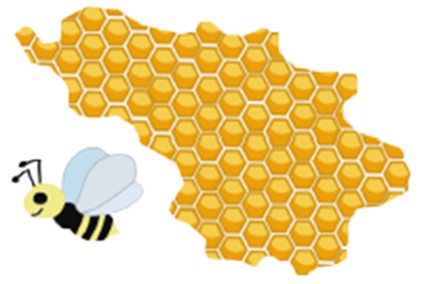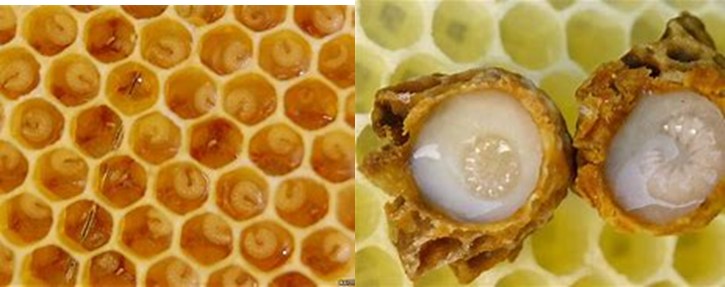In the Beginning - The Egg
Comparing the Development of the Caste (worker, drone, queen)

The development of the worker, drone, and queen are very similar, except for the length of time and cell size.
Worker: Twenty-One Days (a female bee that lacks fully developed female reproductive organs)
Drone: twenty-four days (Male)
Queen: sixteen days (female bee that has a fully developed reproductive organs)
Honey Bee begins as an egg laid by a queen.
Video: Amazing Time-Lapse: Bees Hatch Before Your Eyes
The First 21 Days of Bee’s Life (TED)
Video: Honeycomb under a Microscope! (The Life Cycle of a Honey Bee)
Comparing the Life Span of the Caste (worker, drone, queen)
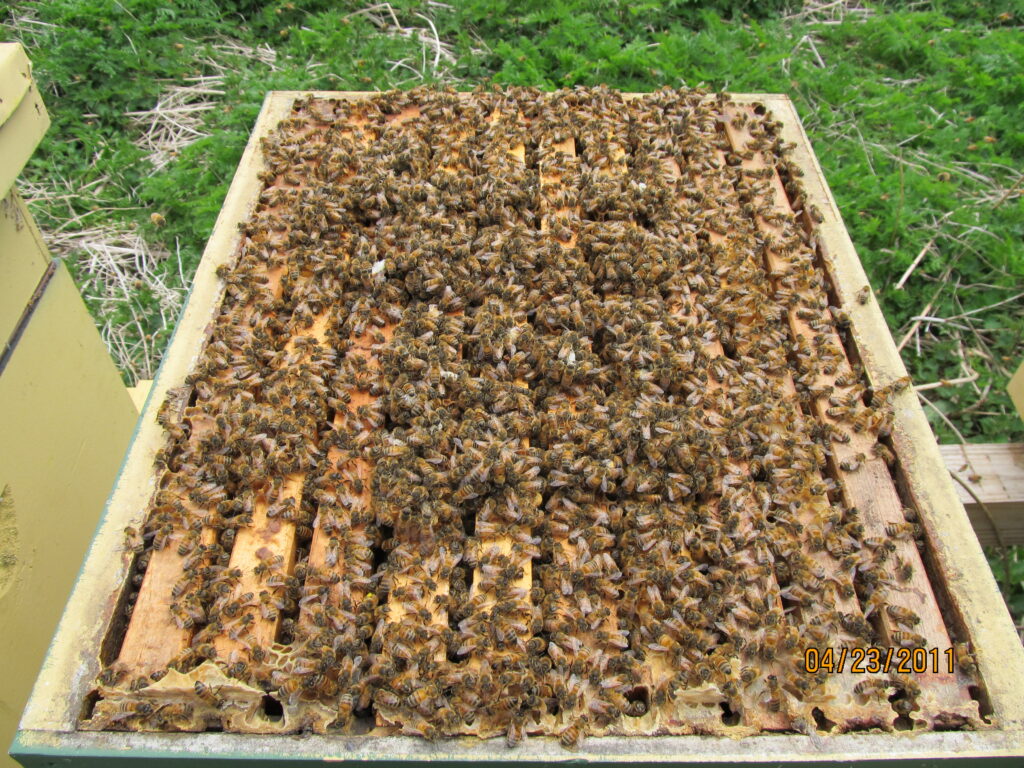
During the summer months, a hive may consist of 60,000-80,000 bees. 90-95% (55,000 to 66,500) will be worker bees. 5-10% will be male bees (drones) and, usually, there is only one queen. Daily duties of the hive fall onto the worker bees who performs the many of the tasks required to maintain the hive. When a hive is highly active, beginning in early spring, a worker bee’s average life span is approximately 42 days (6 weeks). The workers either are worked to death, are killed protecting the hive, or die in the process of gathering food for the hive. The average life of a drone bee is approximately 16 weeks, (4 months, or a season). The drone either dies in mating with a queen or is expelled from the hive when they are no longer needed, in late fall. A queen can live multiple years, 1-2 years.
Comparing the Life Span of the Caste (worker, drone, queen)

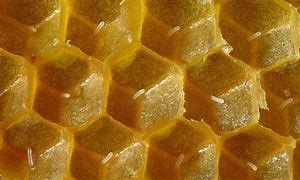
We will begin with the laying of an egg. The queen lays either an unfertilized or a fertilized egg. An unfertilized egg will become a male bee, known as a “Drone”. The other, a fertilized egg, will become a female bee. Based upon the need of the hive, this fertilized egg will grow into a worker or a queen. Depending upon the food it receives and the cell in which it grows will determine its outcome. The eggs are all the same size, 1 to 1.5 mm long, (half the size of a grain of rice, and weigh 0.22 mg. A worker cell will be approximately 4.6 mm to 5.1 mm. A drone cell will be approximately 6.4 to 6.6 mm, 40% larger than worker bee cells. A queen cell, depending upon the conditions, (see: swarm cell, emergency queen cell, or supercedure queen cell) will be significantly larger.
Comparing the Sizes of the Caste (worker, drone, queen)
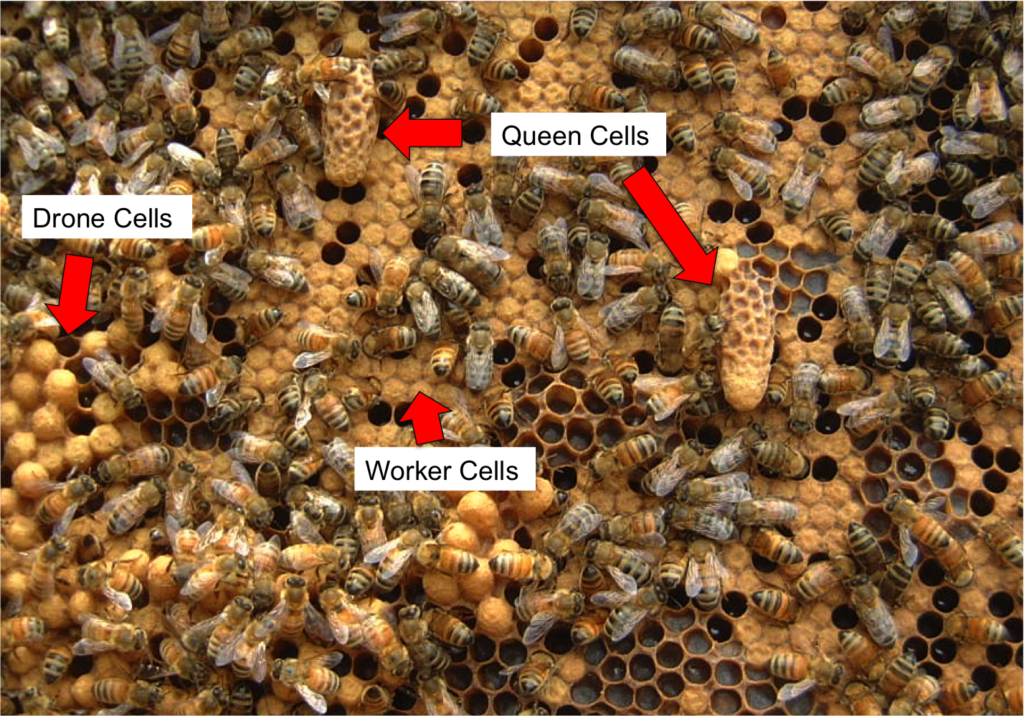
The queen’s royal court, known as “Retinue” that consists of 6-10 workers, guides the queen from frame to frame and cell to cell until the correct area is found. Once the correct area is located, the queen measures the diameter of the cell with her mandibles to determine if it is a worker-size cell, (approximately 5 mm), a drone cell (approximately 6.5 mm), or a queen cell. Once the size is determined, the queen will lay the proper egg, a fertilized egg in a worker or queen cell, or an unfertilized egg in a drone cell. The queen is only responsible for laying the egg. (see “Life of a Queen” for more information) After the egg is laid, the workers are responsible for properly feeding and maintaining the conditions of the future bee through each of its stages until the egg emerges through metamorphosis as a bee. This is accomplished through the pheromones that each egg and larva produce.
Comparing the Rate of Growth
The bee egg, when laid by the queen weight 0.132 mg. it is shaped like a grain of rice and is 0.003 inches in diameter – approximately the thickness of a hair.
The yolk will provide the food while the baby bee grows inside the egg. After three days, the eggshell, a soft shell, will hatch and become larva. The bee will remain as larva for an additional six days. During this time, three-day to five-day old worker bees (referred to as nurse bees) will feed royal jelly to larvae for the next three days. For the following three days, the larvae will be fed bee breed, a mixture of honey and pollen. Royal jelly is a protein-rich food; produced by the hypopharynx gland of worker bees and placed in cells. At the end of twelve additional days, a worker bee larva weighs approximately 155.2 mg. The worker bee larva has gained approximately 1,176 times its weight, from an egg, in nine days. To provide you a comparison, that is the equivalent of a house cat that weighs 12 pounds growing into the size of an African elephant, weighing 14,000 pounds, in nine days. WOW!
For more information visit: Rates of Growth of Honeybee Larvae
